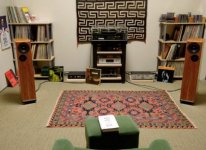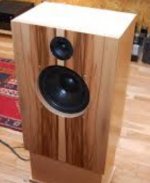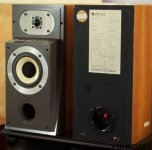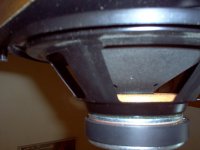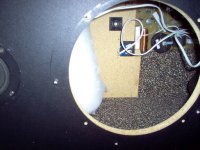Can you guys help with this speaker I.D. There is no sticker or label on these anywhere I can see. I picked them up at the local Good Will for $20. They have a very heavy cabinet and seem like someone put some thought into the design. Thanks for any help.
Attachments
-
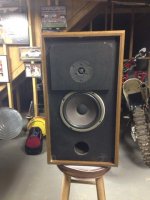 IMG_0564.jpg53.1 KB · Views: 332
IMG_0564.jpg53.1 KB · Views: 332 -
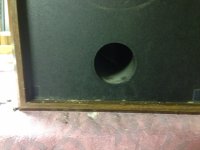 IMG_0575.jpg73.7 KB · Views: 129
IMG_0575.jpg73.7 KB · Views: 129 -
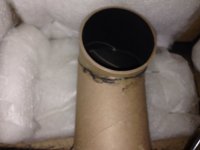 IMG_0574.jpg59.8 KB · Views: 358
IMG_0574.jpg59.8 KB · Views: 358 -
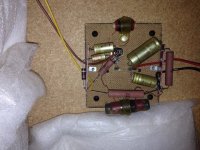 IMG_0573.jpg68.9 KB · Views: 432
IMG_0573.jpg68.9 KB · Views: 432 -
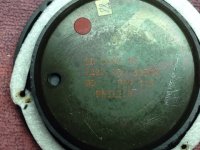 IMG_0577.jpg64.6 KB · Views: 190
IMG_0577.jpg64.6 KB · Views: 190 -
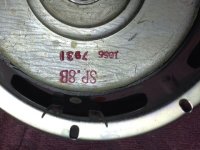 IMG_0571.jpg60.2 KB · Views: 167
IMG_0571.jpg60.2 KB · Views: 167 -
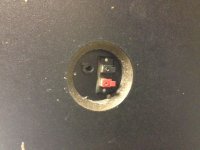 IMG_0569.JPG121.2 KB · Views: 303
IMG_0569.JPG121.2 KB · Views: 303 -
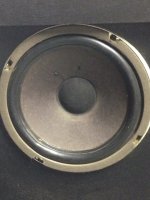 IMG_0567.jpg79.3 KB · Views: 299
IMG_0567.jpg79.3 KB · Views: 299 -
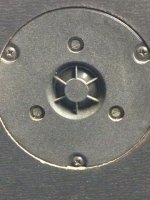 IMG_0566.jpg63.8 KB · Views: 294
IMG_0566.jpg63.8 KB · Views: 294 -
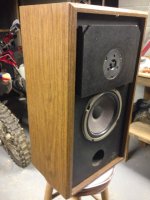 IMG_0565.jpg82.4 KB · Views: 655
IMG_0565.jpg82.4 KB · Views: 655
Apparently they are Grafyx SP-6. They made SP-6,8, and 10 models. Number being the size of the woofer. Seems to have been a good find for $20.
Apparently they are Grafyx SP-6.
Happily, I stand corrected.
I thought 1056 was Gefco
I'm certainly not the definitive resource. But here's a link and a pdf file, FWIW.
Antique Speaker Repair and Recone Services from The Speaker Shop
Attachments
Happily, I stand corrected.
Not corrected. Grafyx was the finished speaker manufacturer.
Fisher is the woofer according to the codes.
Philips is the tweeter because everyone and their dog has owned one of the AD series and it happens to say so on the back cover. 🙂
Hey Cal,
I was referring to my "1980's diyAudio" comment as not correct.
They look like a lot like homebrew or modded stuff from back then. In fact, it's the Philips tweeter and the raised baffle that give it that look.
I was referring to my "1980's diyAudio" comment as not correct.
They look like a lot like homebrew or modded stuff from back then. In fact, it's the Philips tweeter and the raised baffle that give it that look.
Going to replace the caps and resistors on the crossover. Any thought on using the below?
33uF 100V Electrolytic Non-Polarized Crossover Capacitor
33uF 100V Electrolytic Non-Polarized Crossover Capacitor
I don't suppose you'll go far wrong with those. I've been using Mundorf 70V non-polars lately. They are rather snazzy looking with GOLD lettering on a shiny black background, which must maximise performance. 😀Going to replace the caps and resistors on the crossover. Any thought on using the below?
33uF 100V Electrolytic Non-Polarized Crossover Capacitor
What's it called? A Grafyx SP-6? It looks well thought out, and has some interesting design features. Is that felt around the slightly ancient Philips tweeter? A recessed 6" paper bass, all suggesting a BW3 crossover. I want to see the crossover schematic. Just trace the components from the input to the bass, and to the tweeter. Keep an eye on polarity.
I think this is an old DIY I would not want to work out the time alignment with that tweeter out front. Looks like they covered a cut out with a board to hold a tweeter. If the stuffing is in bags as it looks that can't work. The crossover does look worked out well and the box looks good I like the beveled front edge.
Thanks guys. They are the Grafyx SP-6. There is no felt around the tweeter. Seems to be the original design, no diy here yet. Would you recommend some felt around the tweeter. I already changed the ferrofluid and did some tweeter repair. They sound pretty good for $30 bucks.
I went with these.
Dayton Audio DMPC-33 33uF 250V Polypropylene Capacitor
I went with these.
Dayton Audio DMPC-33 33uF 250V Polypropylene Capacitor
Last edited:
Ew, I am SO fed up with the whole MKP replacing electrolytics "upgrade" business... so boring saying the same ESR thing again and again. Let's hope for the best. 😱
You can try felt if you like. It may damp the front panel a bit if glued on, along with slight diffraction modification. The diffraction effect is a slight narrowing of dispersion, IIRC.
The stuffing should work much the same even in bags.
Time alignment and filter slope is an interesting topic. It's why I want you to trace the schematic and tweeter polarity here. There is a current trend for time alignment shown in the old Leak 3020, but there exist solutions where the woofer is recessed, usually for a 90 degree BW3 phase constant power alignment.
Because BW3 only works well on 3 of the 4 listening axes, it can sometimes be advantageous to turn the whole thing upside down, here for listening above axis. Images 2 and 3, designs by John Devore, will delight savvy BW3 fans. 😎
You can try felt if you like. It may damp the front panel a bit if glued on, along with slight diffraction modification. The diffraction effect is a slight narrowing of dispersion, IIRC.
The stuffing should work much the same even in bags.
Time alignment and filter slope is an interesting topic. It's why I want you to trace the schematic and tweeter polarity here. There is a current trend for time alignment shown in the old Leak 3020, but there exist solutions where the woofer is recessed, usually for a 90 degree BW3 phase constant power alignment.
Because BW3 only works well on 3 of the 4 listening axes, it can sometimes be advantageous to turn the whole thing upside down, here for listening above axis. Images 2 and 3, designs by John Devore, will delight savvy BW3 fans. 😎
Attachments
No the bags do change things the idea of insulation in a speaker is to absorb the air vibrations by making the sound waves work their way around the mass of fibers. Each time they touch a line of glass or a string of cotton some of their energy is lost. This is how a box can seem to gain volume with stuffing. In a BR box the stuffing is not to enlarge the box but it is there to absorb the acoustic energy. The bag will present only 5 surfaces for the sound to bounce off of. Without the bags all the fibers have edges.
Borus said:"Ya but what does he know anyhow"
That, as it goes, is the attitude of someone who is resistant to facts. Your ego is hurting, and TBH, this bag issue is an unwelcome distraction from more interesting things here. It takes the thread backwards. 😀
Put a piece of clingfilm over your ears, and you will find your hearing is very little impaired. Sound passes straight through it, even at high frequencies. Otherwise we could just line our rooms with some thin and light material as a sort of wallpaper and turn them anechoic.
There are two sorts of damping in loudspeakers. Cabinet or panel damping to lessen panel colouration, which applies to all loudspeakers. Volume damping to reduce standing waves, which is not strictly applicable to reflex because reflex needs movement of air.
It's a complex subject:
This Grafyx reflex approach looks correct to me:
The lining bags do no harm at all, and in fact reduce the tendency for the enclosed fibres to get into the woofer voicecoil and the assembler's lungs.
Not many people know this, but woofer voicecoils are frequently ventilated behind the dustcap as below, increasing the chance of stray fibres clogging them. So, IMO, Grafyx have had a thoroughly good idea here.
Panel damping is applied with glue to the side and top and bottom panels for maximum effectiveness. As volume damping it is only effective when the thickness approaches a quarter wavelength, so has little effect below, say, 3kHz. Hence Troels takes a belt and braces approach by adding some fluff behind the woofer in his SEAS Curv reflex design.
But really, I want to hear what Kevin has gleaned more about his thrift shop bargain. It is clearly not rubbish, and is worth a detailed look at the filter. We might even find a useful upgrade path. Interestingly, some models shipped with a cone tweeter too.
Attachments
System7 Forgive me, Sire, I did not know that this forum was here to ensure that "your" ego was boasted and that only things that "you" wish to discuss are valid here. Just because your eminence expertise and interests is the modifying of crossovers (which is important here) but this is not a crossover only forum.
I leave my ego at the door when I enter the realm of science and mathematics. Nobody knows everything.
But really, we shouldn't be wasting too much time on the minimal effects of a bit of fluff in a cabinet. Whether it is BAF wadding loose, or in a pillow case with closed box. It is a distraction. This is just a question of focussing on what is important here.
Since Grafyx are merely lining the sides for reflex, they seem to be doing the right thing too. This may also help midrange leakage from the port. And bear in mind this has little effect on bass. For that, you need much heavier stuff like fibreglass as volume damping.
But really, we shouldn't be wasting too much time on the minimal effects of a bit of fluff in a cabinet. Whether it is BAF wadding loose, or in a pillow case with closed box. It is a distraction. This is just a question of focussing on what is important here.
Since Grafyx are merely lining the sides for reflex, they seem to be doing the right thing too. This may also help midrange leakage from the port. And bear in mind this has little effect on bass. For that, you need much heavier stuff like fibreglass as volume damping.
- Status
- Not open for further replies.
- Home
- Loudspeakers
- Multi-Way
- Speaker Identification
